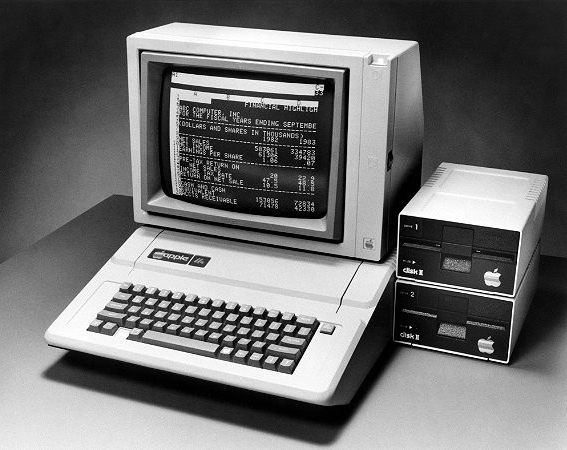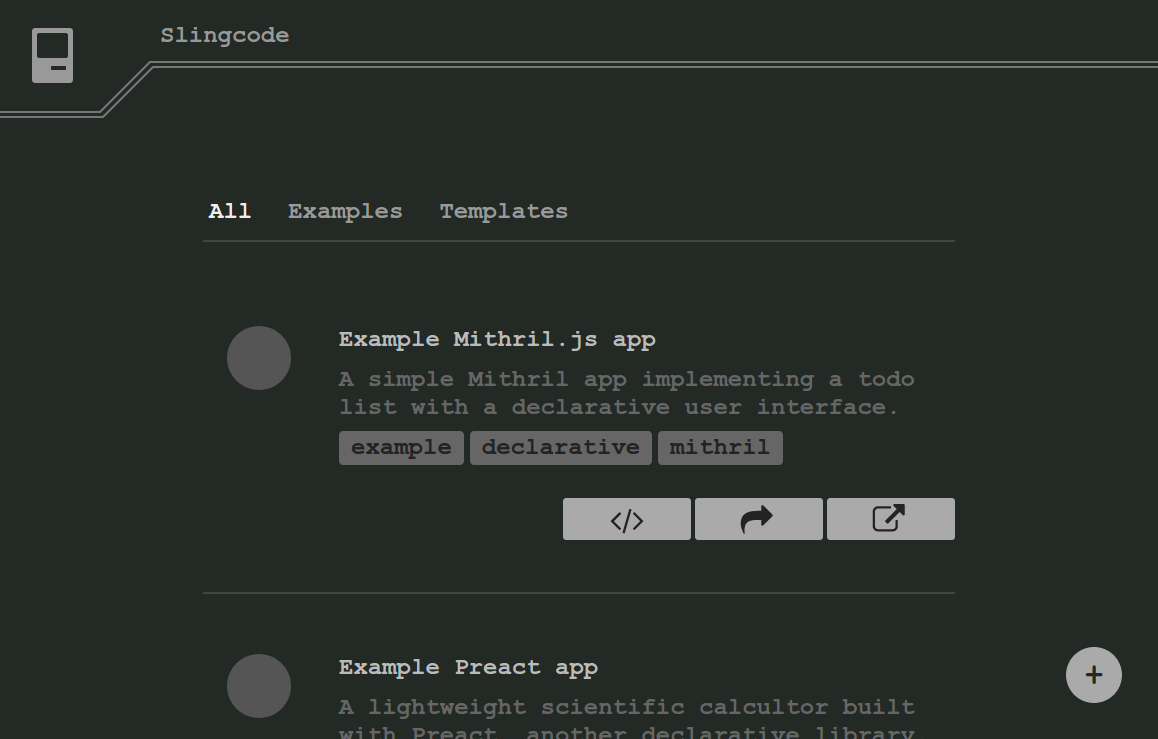At the end of June I finally shipped Slingcode, the browser based code editor I've been working on for several months.
The response was overwhelming:
- ~22,000 visitors to the site.
- ~7,000 uses of the Slincode app.
- ~2,400 YouTube views of the intro.
- Made the front page of Hacker News.
- 100+ reactions on dev.to.
- 57 retweets of the launch.
This has been a humbling experience and I'm grateful to every person who checked it out and those who gave me feedback. Thank you!
Since then I've been recording screencasts for getting started with technologies like React, Vue.js, and SVG live-coding in Slingcode. You can find the screencasts at slingcode.net/screencasts.html or on the YouTube playlist embedded here:
I hope this tool and the screencasts are useful to you.
Enjoy!
Un-template is a minimal Python library to modify and render HTML. The idea is to start with a pure HTML document, choose the bits you want to modify using CSS style selectors, and then change them using declarative Python datastructures. This means you can use pure Python to replace sections of HTML and do all of the "template logic", similar to how declarative front-end frameworks work.
Install it with pip install ntpl.
Here's an example. It's a Django view function that returns a web page. A file called index.html is loaded, two HTML tags with IDs content-title and content are replaced with new content. A link tag with ID home is replaced completely with a new link tag.
from ntpl import slurp, replace, replaceWith, render
template = slurp("index.html")
faqs = markdown(slurp("FAQ.md"))
def faq(request):
html = template
html = replace(html, "#content-title", "FAQ")
html = replace(html, "#content", faqs)
html = replaceWith(html, "a#home", render(["a", {"href": "/"}, "home"]))
return HttpResponse(html)
That's basically all there is to it. You can use it like this instead of Django's native internal templating language.
You can get the source code on GitHub or install it with pip.
It is inspired by Clojure's Enlive and Hiccup, this library uses pyhiccup and Beautiful Soup to do its work.
When you're building some MVP or SLC it's tempting to over-think technical choices early on. It's tempting to build in all kinds of features and infrastructure.
"People might want a PDF," you think to yourself, "so I'll also build and deploy a PDF rendering server!"
"I'll need a way to measure everything my ten million customers are doing at scale so I'll deploy this elastically scaling mega analytics doodad framework server and hook it up to every user action in my app!"

It's much easier to imagine new features than it is to actually build them. Before you know it there is a vapourware castle shimmering on the horizon.
I've found a useful thought pattern to combat this type of over-engineering. For every technical question just think to yourself:
What will my zero customers think of this?
When you are building the first version of something there are literally zero users. Unless it is the core function of the thing you are building, making a PDF rendering server or deploying a giga-scale analytics system is not what you should be doing. Your zero users don't care about those things! Getting even one person to actually use your thing and tell you if it's good or not is what you should be doing. Talking to people and asking them what they need is what you should be doing.
Let's protect the most scarce resource of all: our own time. At the start of the project let's make a bee-line towards shipping the best possible implementation of the core function of the software so we can find out if its useful and good.
Recently I was teaching one of my kids a bit of web coding. This is way more complicated than it should be. There are so many moving parts - configuration, build systems, editors, hosting requirements, certificates etc. just to get a simple web app running. Why?
I thought back to when I was learning to code with my mother on our Apple IIe. The computer was ours. The code was ours. The data was ours.

I thought back to shareware. First diskettes and then FTP. I thought about my first website and those first Multi User Dungeons. Nethack and newsgroups and bulletin board systems. Trading ware with friends. I remembered running Linux for the first time on a Pentium. The freedom and power of getting to do what you want with your computer and a network connection. How can we take our computers back?
I started thinking about what a personal computing platform would look like today. A platform that a kid could jump right into and start coding. A platform where a kid could build cool stuff without asking for permission. Systematic convex tinkering with computers. Where they could own their software, and their data, and their device.
A way to make, run, and share web applications without needing site hosting, SSL certificates etc. An app repository and a text editor in a single web app. A way to share apps peer-to-peer, directly between trusted friends, family, and associates.
Then I re-read this:
- Personal computers – in the original visions of many personal computing pioneers (e.g. many members of the Homebrew Computer Club), the PC was intended as personal property – the owner would have total control (and understanding) of the software running on the PC, including the ability to copy bits on the PC at will. Software complexity, Internet connectivity, and unresolved incentive mismatches between software publishers and users (PC owners) have substantially eroded the reality of the personal computer as personal property.
This desire is instinctive and remains today. It manifests in consumer resistance when they discover unexpected dependence on and vulnerability to third parties in the devices they use.
Nick Szabo in Trusted Third Parties Are Security Holes.
This is the important thing. It has to be self sufficient. It has to work properly whilst depending as little as possible on third parties.

Last Monday I started building this. It's called Slingcode. With it, you can write, run, and share your own web applications directly in the browser. You don't need any build system, hosting provider, SSL certificate, or any thing else. You don't even need an internet connection. Just a web browser and the single HTML file containing the Slingcode web app.
Stay tuned.
